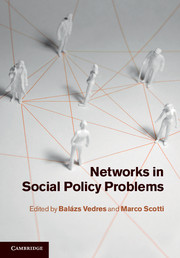Book contents
- Frontmatter
- Contents
- List of contributors
- Acknowledgements
- 1 Introduction
- Part I Information, collaboration, innovation: the creative power of networks
- 2 Dissemination of health information within social networks
- 3 Scientific teams and networks change the face of knowledge creation
- 4 Structural folds: the innovative potential of overlapping groups
- 5 Team formation and performance on nanoHub: a network selection challenge in scientific communities
- Part II Influence, capture, corruption: networks perspectives on policy institutions
- Part III Crisis, extinction, world system change: network dynamics on a large scale
- References
- Index
2 - Dissemination of health information within social networks
from Part I - Information, collaboration, innovation: the creative power of networks
Published online by Cambridge University Press: 05 September 2012
- Frontmatter
- Contents
- List of contributors
- Acknowledgements
- 1 Introduction
- Part I Information, collaboration, innovation: the creative power of networks
- 2 Dissemination of health information within social networks
- 3 Scientific teams and networks change the face of knowledge creation
- 4 Structural folds: the innovative potential of overlapping groups
- 5 Team formation and performance on nanoHub: a network selection challenge in scientific communities
- Part II Influence, capture, corruption: networks perspectives on policy institutions
- Part III Crisis, extinction, world system change: network dynamics on a large scale
- References
- Index
Summary
Introduction
State agencies responsible for managing various risks in social life issue advisories to the public to prevent and mitigate various hazards. In this chapter we will investigate how information about a common foodborne health hazard, known as Campylobacter, spread once it was delivered to a random sample of individuals in France. The Campylobacter is most commonly found in chicken meat and causes diarrhea, abdominal pain, and fever. The illness normally lasts a week but in rare cases patients can develop an auto-immune disorder, called Guillain-Barré syndrome, that leads to paralysis and can be deadly. Campylobacter, together with Salmonella, is responsible for more that eighty percent of foodborne illnesses in France and strikes over 20,000 people each year. People can take simple steps to avoid infection by cleaning their hands, knives, cutting boards, and other food items touched by raw chicken meat and by cooking the meat thoroughly.
In this chapter we build two different network models to see how the information about Campylobacter diffuses in society, by mapping onto various network structures the data we gathered with three waves of surveys. In these models the spread of information depends on two sets of factors. Firstly, each person has a set of individual properties that influences their propensity to transmit the information to or to receive the information from someone they know. Second, each person is connected to others in ways that also affect transmission. There are three aspects of these social ties that matter.
- Type
- Chapter
- Information
- Networks in Social Policy Problems , pp. 15 - 46Publisher: Cambridge University PressPrint publication year: 2012

